They say money can’t buy happiness, but there’s definitely a link between basic financial stability and the ability to focus on living your life. No matter how much you make, learning how to manage your money better can allow you to unlock your potential and set yourself up for financial success.
Table of Contents
- Track Your Spending
- Get Serious About Budgeting
- Build an Emergency Fund
- Establish Financial Goals
- Get Out of Debt
- Focus on Your Credit Score
- Plan for Retirement
- Set Up Automatic Saving
Turn to Debt Reduction Services for Help
FAQ: Money Management Questions
What Is the 50-30-20 Rule of Money?
What Is the Best Way to Manage My Money?
How Much Savings Should You Have by 30?
8 Money Management Steps
Bring your questions about money management to our eight principles for managing your money. Start by brushing up on some essential financial terms, and then follow these steps to get your money management skills on track.
1. Track Your Spending
Getting a handle on your finances begins by figuring out your starting point. How much are you spending on a weekly or monthly basis? What do you learn by dividing your expenses into categories? There are essentials like rent, mortgage, and utility bills, but how much are you spending on adjustable items like entertainment and treats?
We’re not looking to make judgments right now. The point is simply to take some time to get a snapshot of your finances right now. You can use online banking or your bank statements to chart everything yourself, or look for a trustworthy free app that helps you track and categorize your spending automatically.
2. Get Serious About Budgeting
You’ve probably heard this tip before, but if you’ve never actually gone to the effort of putting together—and learning to follow—a detailed budget, now’s the time to change that. Budgeting is about taking control of your spending and being intentional, and it’s a foundational step for pretty much everything on this list.
Simply put, learning how to budget is an irreplaceable step if you want to manage your money better.
3. Build an Emergency Fund
An emergency fund is essential for the simple reason that emergencies happen, and they can be expensive. If you don’t have the money set aside to deal with unexpected expenses when they arise, proper money management principles inevitably go out the window. What are your options? Sell items you want to keep or go into debt? If you need money quickly, there are only so many ways to meet that need.
This is why your emergency fund should be a priority. Setting aside even $1,000 to start can make all the difference when you need car repairs or have an unexpected medical bill. That money helps you stick to your financial goals even when the going gets rough. Eventually, you’ll want to set aside enough to cover 3–6 months of expenses so you can stay on your feet if you ever go through a period of unemployment.
4. Establish Financial Goals
In step one, we told you it was important to know where you started. Once you figure that out, you need to ascertain where you want to go—that’s the only way to determine the next step.
Sit down and figure out your financial goals so you can determine how to get there. Ask yourself questions like:
- Do I need to pay off student loans?
- Do I want to save up for a large expense, like a vehicle or a vacation?
- Is my emergency fund where it needs to be?
- Am I trying to save for retirement?
- Do I need to set aside money for special events, like birthday or Christmas gifts?
A mixture of smaller, short-term goals and longer-term goals is healthy for this step. While it’s good to have an eye on the future, setting some goals you can achieve more quickly can boost morale as you implement your plans.
5. Get Out of Debt
Uncontrolled debt makes it extremely difficult to manage your money effectively. Interest payments and service fees add up quickly, and it can be hard to get ahead when you’re still paying off goods and services you got the value from long ago.
There are multiple methods to getting out of debt, including popular methods like the debt snowball and avalanche techniques. The best option will be whatever method works best for you.
Sometimes, though, people need a little help, and debt can quickly spiral out of control. If that sounds familiar, there are debt relief options available that are a lifesaver. If this is the hardest step on this list, reach out for help at (866) 688-3328 so we can help you figure out what to do next.
6. Focus on Your Credit Score
Your credit score can make a huge difference when you apply for a lease or buy a car. Since people with better credit get offered more favorable interest rates across loan products and may even get lower insurance rates, improving your credit rating can save you a lot of money.
Many factors go into your credit score, but for our purposes here, let’s just focus on one of the bigger elements: Do your best to pay all your bills in full and on time. That includes debt payments. Late and missing payments greatly impact your credit, so this one tactic means a lot.
7. Plan for Retirement
If this isn’t one of the financial goals you considered in step four, we recommend you at least put it on your radar. Even if you still have decades to go, retirement savings put interest rates to work in your favor, so any money you put aside has the potential to grow. The earlier you get started, the healthier your account will look once you retire, even if you can only manage to put aside a little bit right now.
8. Set Up Automatic Saving
There are a couple of different ways to let technology help you prioritize saving money:
- Use an app. For a small fee, some apps will automatically analyze your spending habits and sneak money into a savings account at times when you should be able to spare it. If they take too much, you should be able to transfer money back into your checking account at any time.
- Set up savings with direct deposit. If your paycheck is automatically deposited in your account, your work may allow you to automatically put a certain amount or a percentage into a savings account. Saving can be easier if you never see that money in your checking account.
- Look into bank programs. Talk to your bank to see if they offer an automatic savings program. Some could automatically round up debit card purchases, for example, and put the remainder into a savings account. If you buy something for $4.85, your bank will charge you $5 and put $0.15 into your savings. It’s not a lot, but it adds up!
Turn to Debt Reduction Services for Help
A lot of people struggle to manage their money better because debt makes it so difficult. If that describes you, a little help can go a long way. Call (866) 688-3328 today to speak to a certified debt relief counselor to see how we can help you reach a better place for money management.
FAQ: Money Management Questions
What Is the 50-30-20 Rule of Money?
This financial technique involves splitting up all incoming funds according to percentages:
- 50% goes to needs
- 30% goes to wants
- 20% goes to savings
If this works for you, that’s wonderful, although many households don’t earn enough money to cover all their essential expenses with half of their paycheck.
What Is the Best Way to Manage My Money?
The best way to manage your money is the one that works best for you. There are countless options out there, including the 50-30-20 rule explained above. Since you’re in control of setting your financial goals, only you can decide on a money management method that makes the most sense for you.
How Much Savings Should You Have by 30?
This depends on your financial goals, but many experts suggest you should have the equivalent of your annual income set aside by 30. If you make $40,000 a year, having that much in the bank by the time you leave your 20s would be great. That puts you in a great position for your retirement planning, too.
However, bear in mind that it’s never too late to start. If you’ve already missed the chance to make that milestone, follow the steps in this piece to learn how to manage your money better and help you get on track.










